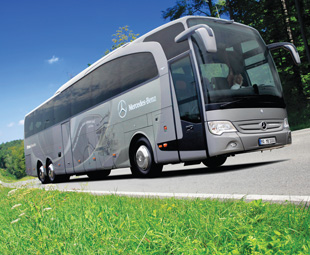Water force be with you

Back in 2002 Voith Turbo, of Heidenheim, introduced a primary water retarder for heavy commercial vehicles. Named the Aquatarder, this device – fitted to the front of the vehicle’s engine – diverted the power unit’s cooling water to a rotor/stator chamber, where a braking- resistance-to-crankshaft rotation was generated. This in turn, slowed the vehicle through its mechanical driveline and the water was returned to the engine’s cooling system for recirculation through the radiator/heat exchanger. A second-generation device now promises up to 30 percent more continuous braking power.
The Aquatarder was considerably lighter than contemporary hydraulic units and subsequently adopted by MAN, which combined it with its own EVBec engine brake to constitute the PriTarder supplementary braking package. Because the Aquatarder achieved its greatest braking efficiency (up to 1 450 Nm) at relatively lower vehicle speeds, MAN recommended the PriTarder system mainly for vehicles employed in distribution and construction site use.
That’s now been followed by the development of a secondary water retarder, using essentially the same method of brake force generation but now fitted in the vehicle’s driveline, downstream of the engine, allowing it to produce a greater retardation effect. Voith claims this new device produces up to 30 percent more continuous braking power, is wear-free, is 35 percent lighter than comparable hydraulic units and suggests it can perform up to 90 percent of all vehicle braking operations.
The first application of this unit can be found in Mercedes-Benz’ new Travego Edition 1 coach, with a claimed braking output of up to 520 kW. It’s the manufacturer’s first Euro 6-compliant coach, featuring Blue Efficiency power, a new transmission, increased safety and upgraded cockpit ergonomics.
Published by
Focus on Transport
focusmagsa


